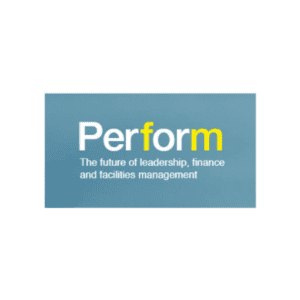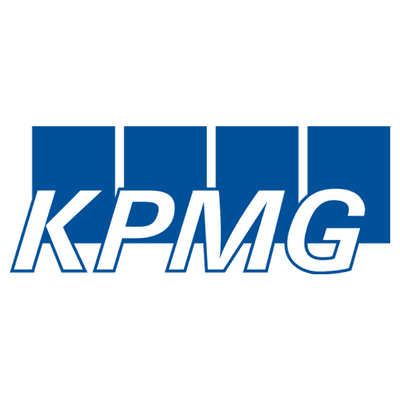
Reports & Articles

Strategies & Trends in Capital Allocation: Building Materials
Gyrations in the lumber marketplace, supply chain shortages, rapidly advancing “living materials,” and pending infrastructure legislation are but some of the trends impacting how building materials companies evaluate their short- and long-term capital investment priorities. Read this edition of Strategies & Trends in Strategies & Trends in Capital Allocation: Building Materials to learn more.

Strategies & Trends in Capital Allocation: Automotive
The effects of the pandemic on factory capacity and supply chain… the rise of battery electric vehicles … evolving autonomous vehicle technology — these are but some of the trends impacting capital allocation strategies in the automotive industry. Read this edition of Strategies & Trends in Capital Allocation to get a concise and practical summary.

Strategies & Trends in Capital Allocation: Aerospace
The effects of pandemic and trade conflicts, modern manufacturing, and urban air mobility — these are but some of the factors facing aerospace companies that impact their capital allocation strategies. Read this edition of Strategies & Trends in Capital Allocation to get a concise and practical summary.

Strategies & Trends in Capital Allocation: Telecommunications
Data privacy and security, impact of regulations, and the need for agile decision making — these are but some of the factors facing telecommunication companies that impact their capital allocation strategies. Read this edition of Strategies & Trends in Capital Allocation to get a concise and practical summary.

Strategies & Trends in Capital Allocation: Chemicals
Demand for innovation, issues surrounding sustainability, and the need for agile decision making — these are but some of the factors facing chemical manufacturing companies that impact their capital allocation strategies. Read this edition of Strategies & Trends in Capital Allocation to get a concise and practical summary.

Strategies & Trends in Capital Allocation: Mining
The increased use of industrial robotics, impact of digital transformation, and drive toward innovation — these are but some of the factors facing mining companies that impact their capital allocation strategies. Read this edition of Strategies & Trends in Capital Allocation to get a concise and practical summary.

Building a business case for the digital transformation of capital project management: An FP&A Exec’s Guide
You did the research. You’ve done the demos. A SaaS solution for Capex is the way to go. To you and your team, who are tasked with ensuring that capital projects are properly vetted, strategically considered, had consistent approval criteria applied, and reported accurately, it’s a “no-brainer.” But to others in the organization, who have a different or more varied focus than FP&A, it might not be so obvious. This article looks at three common hurdles based on feedback from hundreds of actual cases, and provides suggestions on how to overcome them.

Strategies & Trends in Capital Allocation: Metals Manufacturing
Industrial robotics, digital transformation, agile decision making — these are but some of the factors facing metals manufacturers that impact their capital allocation strategies, which capital budgeting software tools are most suited to their objectives, and more. Read this edition of Strategies & Trends in Capital Allocation to get a concise and practical summary.

How do you make yours?
Effective capital investment decisions underpin business success. The purchase of a new building, IT system or machine can enable a business to produce more of its goods and services so that it can expand and grow its market share. Depending on the nature of the investment, it may also enable the business to be quicker and more agile, and possibly cut its costs over the longer term.

Nine practices for better capital-investment management
Across industries, senior executives know that managing capital investments wisely means better cash flow, faster growth, and competitive advantage. Many organizations, however, struggle to manage spending on hundreds or even thousands of capital projects and miss substantial growth and profitability opportunities as a result. They can unlock this value and improve overall capital-investment performance by mastering nine practices and implementing a comprehensive digital capital-portfolio-management application.

Metric of the Month: Percentage of Approved Capital Projects Considered Within or On Budget
Capital projects often require significant investments of an organization’s finances, time, human capital, and other resources. These projects are significant undertakings that can cost tens of millions of dollars or even more. When capital projects go off the rails and over budget, the consequences can be incredibly damaging for an organization’s finances, human resources, and ability to make investments in future capital projects.


Four ways manufacturers can build a better capital allocation strategy
Advanced manufacturing companies have been focusing more on divestments in recent years. But many indicate they lack a strong, systematic capital allocation process needed to invest the cash raised from these divestments. In a recent EY survey of CFOs, only 38% of manufacturing executives say their company takes a formal, systematic approach to allocating capital. That is well below the 47% of the entire 500-plus CFOs surveyed who say they take such an approach.



The Art of Capital Allocation
Capital allocation may be the most critical means of translating corporate strategy into action. Yet many companies today are reducing their capital expenditures, returning cash to shareholders, and holding huge amounts of cash on the sidelines. Successful companies are making smart investments. Our analysis shows that outperformers—companies in the top third of stock market valuation relative to their peers—invest approximately 50% more in capex than their peers and achieve approximately 55% higher returns on assets and approximately 65% higher sales growth.



Eight Crucial Levers for Effective Large-Capex Project Management
Projects involving large capital expenditures, such as the development of oil or natural-gas fields, power plants, and metal-ore mines, have become significantly more challenging in recent years. Demographic shifts and the industrialization of large developing economies have led to greater demand for energy and raw materials, and for increased production. These resources are increasingly sourced from less accessible parts of the world, often in emerging markets, where business operations face unique challenges.


Maximizing Return on Capital Investment
U.S. companies will make capital investments totaling roughly $2 trillion this year. This investment is critically important to their future; according to research by McKinsey & Co., over 50% of corporate growth is directly attributable to capital expenditure (Capex). The companies that do it well significantly outperform their rivals, with Booz Allen finding that companies that employ best practices in Capex management earn 25% higher profits than their peers. With respect to Capex, today’s top performers are focused on the three key dimensions of accountability, visibility and efficiency.






When Projects Have Zero or Negative NPV
The net present value (NPV) rule is essentially the golden rule of corporate finance that every business school student is exposed to in most every introductory finance class. The NPV rule dictates that investments should be accepted when the present value of all the projected positive and negative free cash flows sum to a positive number.






Reversing the Aging Process
According to the most recent Duke University/CFO Magazine Global Business Outlook survey, U.S. executives see their companies in something of a holding pattern, generated by uncertainty and slippage in a number of large economies around the world. But, in contrast to the widespread paralysis that accompanied the fall into the Great Recession, today’s executives are not flinging their hands up in despair. Instead, they are taking a hard look at their aging asset bases and deciding where to invest for the future.






How to Reduce Investment Decision Complexity
Far too many companies have bureaucratic investment procedures that evolve over time into a complex, cumbersome, conflicting, and confusing approval process. Whether it’s for the approval of a capital expenditure, acquisition, research and development program, or marketing investment, there are often too many different analyses, metrics, and go/no-go signals, and they often pull in different directions. Should an executive approve an investment that displays an internal rate of return (IRR), net present value (NPV), average pretax profit margin, and average net income margin that all surpass approval hurdles?






Do We Remember How to Grow?
In 2016, S&P 500 companies returned $877 billion to shareholders as dividends and net share buybacks. Distributions to shareholders increased by nearly 30% from 2007 levels — but, unfortunately, such distributions also represented 90% of these companies’ net income for the year. Cash returned to shareholders is meant to send the positive signal of a healthy business. But, increasingly, this indicator might be glowing red. While companies have honed their skills in cost control and shareholder distributions, sales have only just eked past 2014 levels. On top of that, the expected long-term earnings growth rate of S&P 500 companies is currently at its highest level in nearly six years.


Capital efficiency in a volatile market: Stop burning capital
In a recent poll of 2,000 financial executives who attended a Deloitte Dbriefs webcast, a majority identified capital deployment as the biggest challenge they face in their capital planning processes. Moreover, they considered it a significantly greater challenge than raising capital or distributing it to stakeholders. For this survey, deploying capital was defined as maximizing returns associated with capital expenditures and mergers and acquisitions; maximizing working capital; effective balance sheet and cash-flow planning; and optimizing capital mobility, including international repatriations.



Capital Project Governance
Would you rather have a capital project delivered on time and on budget but with poor project records and number project control issues, or would you rather have a project go over budget and over schedule by 10-20 percent but have well organized and detailed project records? Typically, the answer is “neither.” Striking the right balance between standardization, flexibility, accountability and oversight of your capital program is one of the most challenging aspects of delivering major capital projects.



Killing the black swans
Major capital projects are notoriously difficult to execute. All too often, we hear of important infrastructure projects that have hit delays, gone over budget or – worse – never materialized at all. And all too frequently, management and their boards of directors place the blame on so-called ‘Black Swan’ events: simply put, the unpredictable. But are these events really unpredictable? And what can boards of directors do to improve the predictability of their major capital projects?








Internal rate of return: A cautionary tale
Maybe finance managers just enjoy living on the edge. What else would explain their weakness for using the internal rate of return (IRR) to assess capital projects? For decades, finance textbooks and academics have warned that typical IRR calculations build in reinvestment assumptions that make bad projects look better and good ones look great. Yet as recently as 1999, academic research found that three-quarters of CFOs always or almost always use IRR when evaluating capital projects. Our own research underlined this proclivity to risky behavior. In an informal survey of 30 executives at corporations, hedge funds, and venture capital firms, we found only 6 who were fully aware of IRR’s most critical deficiencies.








Why capital expenditures need more CFO attention
It’s no secret that cost overruns and delays run rampant in large capital projects. Research points the finger at decision biases, which often play an important role in skewing the forecasting of costs and timing as projects are being planned. But a lack of internal discipline, in both the proposal and management stages of a project, further raises costs—both of individual projects and entire portfolios of investment. It’s a drain on the bottom line even when times are good, but it also leaves companies less prepared for capital constraints prompted by external events such as the recent swoon in oil prices. By our reckoning, for example, energy and petroleum companies have already had to trim between 20 and 50 percent off their current year’s capital budget over last year.








Preparing to make big-ticket investment decisions
Few decisions in an executive’s career are as complex or sensitive as a multibillion-dollar investment with a payback timetable that can stretch on for decades. The right call can positively transform a company’s value. The wrong one can damage the company’s share price, draw public criticism, and perhaps even cost responsible managers their jobs. Insight into the process by which successful managers make such decisions is hard to come by. By their nature, projects of this size are highly individual and fairly rare, so quantitative data typically are insufficient to reliably calculate the root causes of failed investments.








How to put your money where your strategy is
Picture two global companies, each operating a range of different businesses. Company A allocates capital, talent, and research dollars consistently every year, making small changes but always following the same broad investment pattern. Company B continually evaluates the performance of business units, acquires and divests assets, and adjusts resource allocations based on each division’s relative market opportunities. Over time, which company will be worth more?








Better forecasting for large capital projects
Large capital investments that are completed on schedule and within their budgets are probably the exception rather than the rule—and even when completed many fail to meet expected revenues. Executives often blame project underperformance on foreseeable complexities and uncertainties having to do with the scope of and demand for the project, the technology or project location, or even stakeholder opposition. No doubt, all of these factors at one time or another contribute to cost overruns, benefit shortfalls, and delays.








How to catch those fleeting investment opportunities
Time is of the essence for many of the small to medium-size investment opportunities that companies face during the course of a year. The right moment can be fleeting, for example, to scale up production in a unit that suddenly takes off, to launch a marketing campaign to meet an unexpected wave of customer demand, or even to acquire a facility that comes abruptly onto the market. These are the kinds of projects, often identified by frontline managers, that a company should be able to approve quickly and undertake in less than a year’s time.








Building a better partnership between finance and strategy
Two-thirds of all executives agree that the best way for CFOs to ensure their company’s success would be to spend more time on strategy. Indeed, it is increasingly common for CFOs to be taking on more strategic decision making. Companies value the hard data and empirical mind-set that a finance chief can lend to strategic planning, especially around forecasting trends, building strategic capabilities, or managing government and regulatory relationships.
